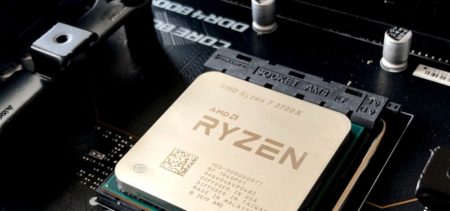Introduction
The Gigabyte P37X is a particularly powerful 17-inch gaming laptop with a dual-SSD Raid array, fast quad-core CPU and Nvidia GTX 980M graphics card with 8GB of video memory.
With a 1080p screen that delivers superb picture quality, the P37X brings the experience of using a desktop PC to mobile computing.
Retailing at about £1799 (around $2200, AU$2800), it’s not exactly affordable, but it’s fairly competitive when compared with other gaming laptops, which aren’t at all the same thing as a portable computer used only for light tasks such as word processing or Facebook.
Gaming laptop 101
Before diving further into the specifics of Gigabyte’s P37X gaming laptop, it’s worth explaining these differences between portable gaming computers and normal laptops.
This corner of the wider computing market caters for its own specific niche, and is intended for a quite different usage scenario than your average Ultrabook or general-purpose laptop. As a rule, gaming laptops aren’t light or thin, the battery life is awful and they cost a small fortune.

But in giving up those qualities, which are normally of utmost importance, a gaming laptop can offer desktop-like 3D performance and high gaming frame rates, by using components that are far more powerful than what’s usually offered.
With generally dire battery life, a massive price tag and at times, less-than-elegant design, why would anyone want such a gaming laptop? The short answer is that they’re a brilliant, convenient way to play PC games on the move, whether you want to enjoy a game of Civilization 5 to while away the time on a long journey, or to bring a gaming-capable PC to a friend’s house for networked gaming.
LAN gaming is a wholly different, more fun, more sociable experience to playing PC games online, as all your friends are very much in the same room, able to share jokes and pizza, as well as the joint gaming experience.
No consolation
And although consoles cater for this type of scenario as well, it’s not at all the same thing. Many gamers prefer playing on a PC with its own dedicated display, rather than sharing a corner of a TV screen. It could be for playing FPS games with a keyboard and mouse, a strategy game that just doesn’t work well on a console, or for one of the many PC-exclusive titles (for example, World of Warcraft). While some may be happy to bring their entire desktop PC and monitor to a friend’s house, or an organised event to enjoy LAN gaming, a gaming laptop is a more civilised option.
Without the kind of powerful, high-end components that come with a high-end gaming laptop like the P37X, you won’t be able to play at full resolution or enjoy most up-to-date gaming titles with a constant 60 fps frame rate. It’s these high-end components that quickly suck a laptop battery dry, plus they output considerable heat that requires heavy-duty cooling, not to mention driving up the cost.
Specification and design
Weighing 2.7kg and measuring 22.5mm high, while still relatively chunky and not exactly small enough to fit into a manila envelope, the P37X is less hefty than a lot of competing gaming laptops and mobile workstations. The design is refreshingly bland too, avoiding the plethora of flashing lights and garish logo designs employed by some manufacturers.
It’s a portable monolith of high-performance gaming hardware, one which looks like a normal laptop in nearly every sense. The chassis is a nice dark gunmetal grey and it all has a rather elegant feel.
With the P37X, you get an Nvidia GeForce GTX 980M, the fastest single discrete mobile GPU currently available, with 8GB of dedicated GDDR5 video memory. 8GB of video memory is still quite a luxury even for desktop graphics, so finding it in a laptop is all the more extraordinary, and should provide a good performance boost in games.
There’s a Haswell-based quad-core Intel Core i7-4720HQ processor, which runs at 2.6GHz but hits 3.6GHz in Turbo Mode, paired with a generous 16GB of DDR3 main system memory, configured as a pair of 8GB sticks. There are only two slots though, so upgrading further needs larger DIMMS, which aren’t currently available.

Superb screen
This is a powerful specification that won’t even break into a sweat when playing Battlefield 4, but the real star is the display – a 17.3-inch IPS panel that looks absolutely superb whatever angle it’s viewed at. For gaming, it’s a lot better than a 14 or 15-inch screen, as it provides a great view of the action, although such a large screen means there’s more chassis space to squeeze in components, battery and cooling hardware.
It’s only a 1080p-resolution screen rather than 4K, and higher-resolution options are only available on Gigabyte’s (marginally) less powerful P35 laptop. In some ways, that’s a good thing. Even the meaty mobile specification here is likely to struggle when running modern games at 4K resolution and high detail, plus there’s the possibly irritating issue of less-than-perfect support for high-DPI on the Windows desktop.
There’s nothing wrong with 1080p, the desktop is guaranteed to always render at the right size and it won’t cause performance issues. It’s a sensible choice for gaming, and if you’re desperate to play at 4K, you can connect an external display to the DisplayPort 1.2 connector.

Plenty of storage
Storage options vary depending on the P37X variant and customisation options you choose. If you wish, the P37X can be fully loaded with four storage devices, including internal space for a pair of mSATA drives that can be set up in Raid 0, ranging from 128GB to 512GB, along with a 2.5-inch drive, with another available if the hot-swappable DVD writer is replaced with a caddy. If you want hard disks as well, up to 4TB can be squeezed into the P37X, for a maximum of 5TB of internal storage. There’s also an option to put three SSDs into a Raid 0, not something regularly offered on laptops.
The sample we reviewed came with a pair of 128GB mSATA SSDs, a 1TB hard disk and the optical drive in place.
There’s also 802.11ac wireless networking, via an Intel 7260 2×2 wireless adaptor, which isn’t the fastest wireless card you can get, but there’s a Gigabit Ethernet connector to fall back on. External displays are catered for with HDMI, Mini DisplayPort and analogue D-Sub outputs, the latter of which is still useful for compatibility with an enormous number of legacy display devices.
Joining this list of connectors on the P37X are two USB 3.0 and two USB 2.0 ports, an SD Card reader, audio jack, and a Kensington lock. Underneath the screen are a pair of 1.5W speakers and there’s an HD webcam at the top.

Keyboard highlights
With the keyboard, the W, S, A and D keys, which every gamer knows are the most important in FPS games, are somewhat pointlessly highlighted with a white square. The entire keyboard is backlit though, and there are programmable macro keys to the side, which many (but not all) gamers find useful.
The use of type-friendly island-style keys is predictable, given their near-universal pervasion in laptop design. Although gamers often show preference for more chunky mechanical keyboards, big and fat keys would have meant a thicker laptop chassis.
The trackpad is nothing special. It’s of average size, with the usual pair of pressure-activated click buttons at the bottom. In my opinion, nothing beats the feel of the trackpads on Apple’s MacBooks, which is somewhat helped by built-in support for gestures in OS X. Although that’s promised with Windows 10, some manufacturers have already programmed their own trackpad gesture support into their software, mimicking the multi-touch gesture in OS X, but this is something Gigabyte hasn’t done with the P37X.
It isn’t a show-stopping issue, since a traditional mouse works so much better in most games anyway. You’d be sensible to pack one in your bag if you’re lugging the P37X to a friend’s house to play FPS or strategy games.
Performance
With so much capable hardware lurking inside it, the P37X really feels more like a desktop gaming system than a run-of-the-mill laptop. Connect up the aforementioned mouse and you’ll certainly be racking up kills in Battlefield 4 in no time, with no danger of suffering low frame rates.
You’ll need to do some immediate tinkering though, as I found when running benchmarks. When spinning, the fans are incredibly noisy, and come on at seemingly random moments, even when you might think the system is idle.
The first port of call was to put the P37X in stealth mode via Gigabyte’s Smart Manager software, which also provides controls for on-screen brightness and volume, the keyboard backlight and so on. Even in stealth mode, there’s a slight hum to the fans as they work to prevent overheating, but it’s bearable and only heard when you’re running a game.
But it also seems that the P37X caps frame rates to save on battery life and heat output. With the power disconnected or the fans set to stealth mode, the GPU is under-clocked, and you’re capped at 30fps. And when you’re running it at full speed, it’s fair to say the P37X is one noisy computer.

Benchmarks
But with the fans set to auto, it delivers some very nice performance indeed. Here are the machine’s benchmark results:
Cinebench
- CPU Multi Core: 636
- CPU Single Core: 133
- OpenGL: 91.71
3DMark
- Fire Strike: 8207
- Fire Strike Ultra: 2278
- Sky Diver: 20761
- Cloud Gate: 19951
- Ice Storm: 121601
PCMark 08
- Home: 3163
- Accelerated: 3800
- Battery Life: 3 hours 17 minutes
Middle Earth: Shadows of Mordor (Ultra detail setting, 1920 x 1080)
- Min: 35.4 fps
- Max: 120.54 fps
- Average: 70.71fps
Middle Earth: Shadows of Mordor (High detail setting, 1920 x 1080)
- Min: 48.5 fps
- Max: 149.8 fps
- Average: 92 fps
Metro Last Light (everything set to maximum, 16xAA, 1920 x 1080)
- Min: 16.67 fps
- Max: 69.39 fps
- Average: 35.67 fps
These tests are taxing on any system, and the results indicate more than reasonable gaming performance. They’re less than the average high-end desktop gaming system, but at least competitive. Drop the detail down a single notch, or try a less demanding game, and you won’t have any problems whatsoever.
General usage
Outside of these tests though, the laptop feels buttery smooth in just about anything. It’s sure to have no problem whatsoever with non-gaming tasks. Rendering video, applying image filters and so on will work beautifully, and of course it’s great for basic office tasks too. The large screen provides a spacious desktop area to work in, although if all you want is a portable computer for Facebook use or word processing a gaming laptop such as this isn’t the best choice.

In the PCMark 08 battery life test, the results from the P37X were surprisingly not bad. It lasted three hours 17 minutes with the brightness set to 50% (more than viewable) and the fans set to stealth mode.
Although this couldn’t be regarded as superb battery life, and pales in comparison to the average Ultrabook, it really isn’t so terrible for a laptop with a Geforce GTX 980, powerful CPU running at 3.6GHz in Turbo Mode, and a large screen. In the same test, Dell’s Precision M3800, for example, lasted just two hours seven minutes.
The PCMark 08 test is quite taxing on the system as well, representing light-but-constant use. With playback of an Avatar Blu-ray rip in Windows Media Player (I’ve found VLC to be a real battery life hog), the P37X lasted four hours 12 minutes. Again, not a bad result at all and more than enough to watch at least one film on a long flight or train journey.
Disk performance from the mSATA Raid array is excellent as well. I ran CrystalDiskMark and measured 938.1MB/sec sequential read and 660.8MB/sec sequential write. The read result is roughly in line with a pair of 2.5-inch desktop drives in Raid 0, although the write speeds are a little lower, explainable by being smaller mSATA drives.
The wireless performance is not the greatest I’ve measured from 802.11ac routers, which is as expected, since it’s only a 2×2 adaptor. At short range I recorded speeds of 328Mb/sec, well below that of most 3×3 antennas. But with an Ethernet port provided as well, it’s not the deal breaker it might be on an ultra-slim laptop that relies solely on wireless.

Further testing
With a good physical build and design, great screen and excellent gaming performance, the P37X is a gaming laptop worthy of recommendation, but I felt the issue of the GPU being under-clocked when the fans are in stealth mode required some further investigation.
I ran the Unigine Heaven 4.0 benchmark, which shows not just the frame rate but also the GPU temperature and memory clock speed. With the fans running in stealth mode, once again, the frame rate was capped around 30fps, and the memory clock reading came out at 800MHz. The GPU temperature hovered around 52 degrees Celsius.
Putting the fans to automatic mode, the memory clock jumped to an effective 2500MHz, and the temperature went up to 72 degrees Celsius. The frame rate then hit over 150 fps. Of course, the fans sound extremely loud in this case. There may be a way to edit a registry key to manually set the fans speed slightly lower to reduce noise, without reducing performance, but I wasn’t able to find this.
Verdict
We liked
The P37X offers fantastic performance thanks to its beefy specification. All of the benchmarks were run at 1080p in maximum detail, and it coped just fine – most impressive for a portable system. There’s loads of memory, a fast quad-core CPU and a highly powerful GPU.
Aside from the trackpad being slightly generic, the build quality is excellent. The screen looks great, the chassis feels solid and the keys are perfect for typing. The storage is fast and there’s plenty of internal capacity spread over the two SSDs and hard disk. For a gaming laptop with a 17-inch screen, it’s not especially thick or heavy either.
With plenty of external connectivity, straightforward upgradability, an included optical drive and Ethernet port, with a no-nonsense look about it, the P37X is just what a gaming laptop should be. All the performance and expandability, with none of the fluff.
Finally the battery life is pretty good, at least compared to other gaming laptops.
We disliked
The fans are quite noisy when running at full speed. While this is a subjective opinion, since everyone’s tolerance levels are different, I was most pleased to turn it off after running the benchmarks. It really lets down what is otherwise an excellent product.
The frame rate is severely capped at lower fan speeds, although 30 fps is still more than playable for most games.
A select few elements of the build, such as the trackpad, could be more befitting of a laptop which is nearly two grand.
Final verdict
The issue of the noisy fans put me off awarding the P37X a higher score. Although other gaming laptops are also noisy, in this case it could really get in the way of the enjoyment of your games, undermining the otherwise excellent experience made possible by the powerful hardware.
With the frame rate capped at 30 fps, you might find performance struggles sometimes if you quieten the fans, leaving all that gaming potential untapped.
That’s a decision best left to the buyer. If you buy a P37X, you won’t have any problems running games, but it’s worth choosing a retailer with a good returns policy, since the noise may or may not be a distraction too far. The only way to find out is to try it first.
![]()































